#Japanese Lesson: Introduction of Pronunciation
Japanese Writing:
The Japanese writing system consists of three different systems:
Hiragana, Katakana, and Kanji
Hiragana:
Hiragana originates from the cursive script of Chinese calligraphy. The form of Hiragana is round and smooth without any sharp angles. Hiragana is a phonetic lettering system. It can be used to represent the pronunciation of a Kanji as well as used alone as a character in writing.
When Hiragana is used as a character on it's own, it can be a segment of a word or a grammatical element in a sentence such as a particle.
As segments of a word: わたし(I)、かばん(Bag)
As particles: を、は
Katakana:
Katakana comes from the regular script of Chinese calligraphy. It's form is more angular in comparison with Hiragana. Both Hiragana and Katakana can be used to represent Japanese pronunciation. And each Katakana has a correspondent Hiragana.
Katakana is usually used to spell foreign words. For example:
Television ➡テレビ(terebi)
Coffee ➡コーヒー(ko—hi—)
Camera➡カメラ(kamera)
Kanji:
There are massive amount of Kanji in Japanese language that are almost identical in appearance with Chinese characters yet with completely different pronunciations and denotations.
I➡私 (read as "watashi")
Umbrella ➡傘 (read as "kasa")
Desk➡机 (read as "tsukue")
Tips:
Hiragana placed above a Kanji is called Furigana, which indincates the pronunciation of the Kanji.

Fifty Sounds (Gojūon):
Gojūon (Fifty Sounds) is the foundation of Japanese learning. It is the Japanese "alphabetical order" and it's name refers to the 5×10 grid in which the characters are displayed. By using a Gojūon chart, Hiragana and Katakana can be learned and memorized pretty fast.
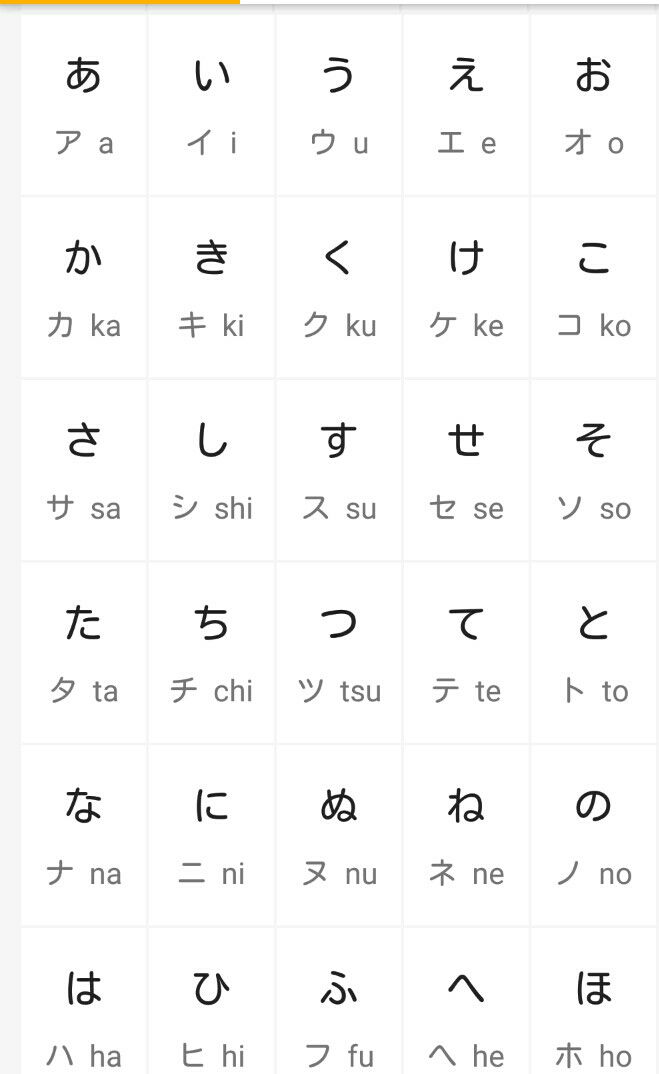

Tips:
A Gojūon chart consists of five columns and Ten rows. The first row contains the five Japanese vowels and they are considered the most important of all, because the Hiragana in the other nine rows is pronounced based on a combination of consonants and those five vowels.
For each row, it's named with the first "Kana" (Hiragana, Katakana). For example, the first row is called "a-row". And for each column, it is also named with the first Kana (Katakana, Hiragana). For the example, the first column is "a-column".
In Gojūon, each Kana is represented in Hiragana, Katakana and Romanization (Romaji).
あ➡ Hiragana
ア➡ Katakana
A➡ Romaji
Romaji is Japanese writing in Roman letters for the convenience of transliteration for speakers of other languages who don't read any Kana. Apart from being broadly employed on signs or slogans aimed at international audiences, Romaji is also a very common way to input Japanese into computers. In the beginning phase of learning Japanese pronunciation, Romaji would be greatly helpful as well.
There are two Romanizations in use today. The Kunrei-shiki and the Hepburn system. They are slightly different in marking the reading of some Kana.
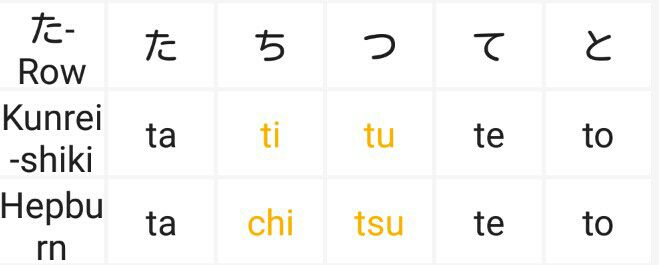
The Kunrei-shiki system is very orderly and traditional in nature and is primarily used inside Japan, mostly in dometic textbooks. The Hepburn ia a direct reflection of Kana's pronunciation. For it's simplicity in grasping Japanese pronunciation, the Hepburn system is extensively applied in Japanese teaching internationally.
Pay special attention to the pronunciation of the Kana in the penultimate row (ra-row). The Japanese "r" is non-rhotic. Though romanized as "Ra, ri, ru, re, ro", they should be pronounced like "la, Li, lu, le, Lo".

Note that the bracketed Kana in the third row to the last (ya-row) and the last row (wa-row) are the same as the Kana in the first row (a-row).
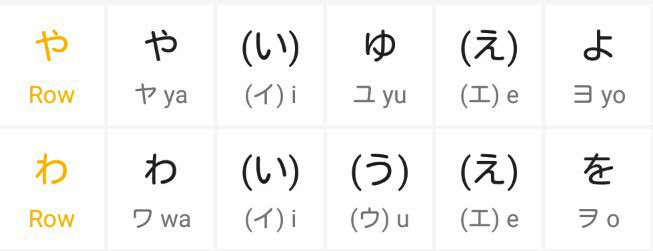
The last Kana
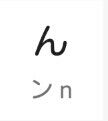
In Gojūon usually doesn't appear on it's own, but rather in combinations with other Kana (go to Hatsuon for more detailed reference). While inputting on a keyboard, double-type "n" for "ん"
___________________________________________
Other than Gojūon, Japanese has additional pronunciation rules such as voiced consonants, Yōon, Hatsuon, long vowels, and Sokuon. Each of those Will be explained one by one as follows:
Voiced Consonants:
There are voiceless and voiced consonants in Japanese. Voiced Consonants are created by adding two dashes to the upper-right corner of their voiceless counterparts as in: "が/ga-row" (with consonant "g"), which stems from the voiceless "か/ka-row" (with consonant "k"); "ざ/za-row" (with consonant "z") from the voiceless "さ/sa-row" (with consonant "s"); "ば/ba-row" (with consonant "b")/"ぱ/pa-row" (with consonant "p") from "は/ha-row" (with consonant "h"). The following voiced consonants chart would be helpful for learning and memorization.
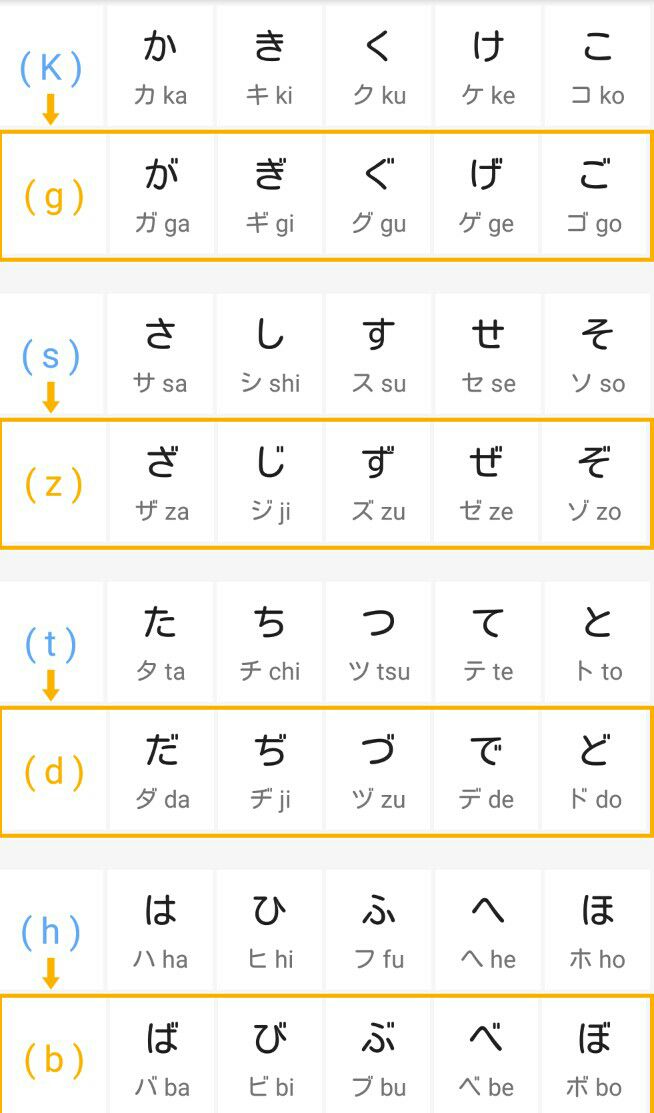

Yōon:
Yōon are represented in Hiragana using any Kana in "い/i-column", such as き (Ki), combined with やya, ゆyu, よYo. For example, kyo is written as きょ [Kyo], using a much smaller version of the Yo Kana よ as a subsript to き. This format also rings true for the other two や and ゆ.
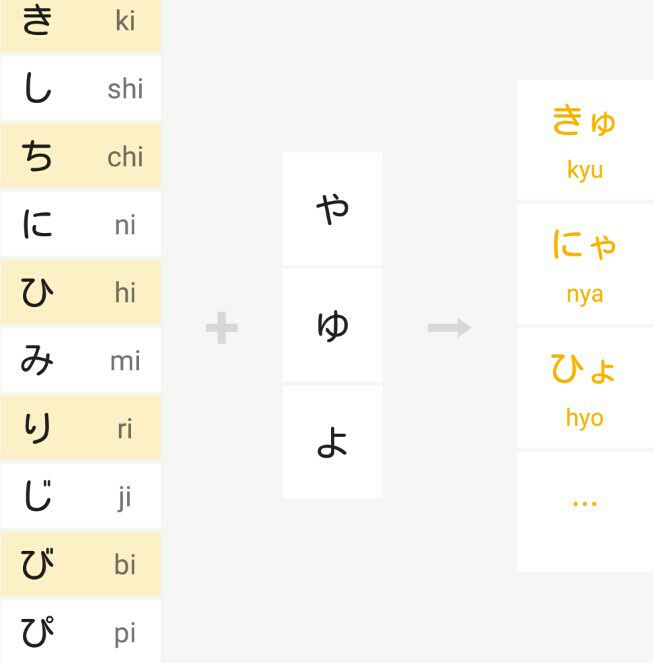
Hatsuon:
"ん/n" is in individual Kana. It is usually not used on it's own but in conjunction with other Kana: "Kana+ん", which is called Hatsuon. Example are as follows:

Tips:
After pronouncing the first Kana, naturally glide to a "en" sound.
Long vowels:
When Kana is followed by the same vowel, it forms a long vowel sound. For example "ka+a" should be pronounced as "[ka:]". The long vowel sound also goes for the Kana in "e-column" followed by "i" and the Kana in "o-column" followed by "u".
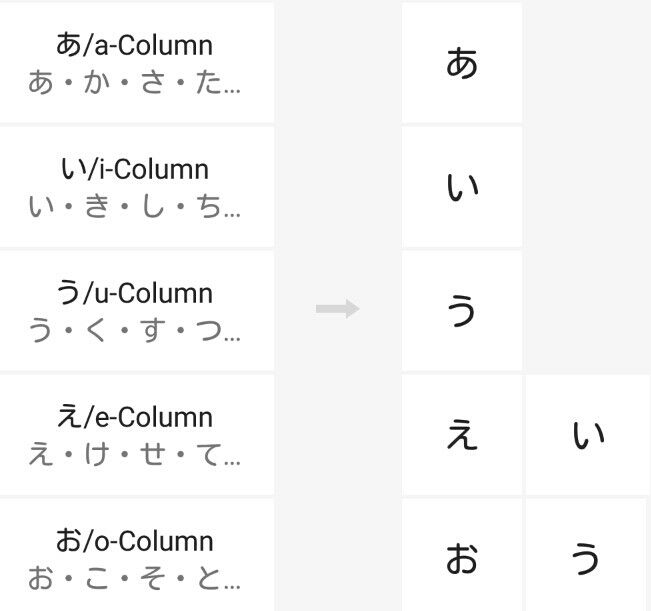
The following are some examples of long vowels:
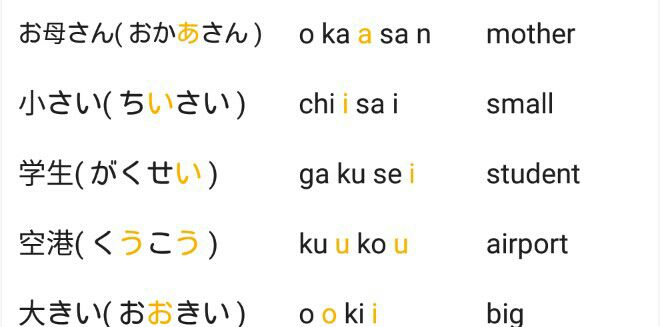
Sokuon:
"っ" placed between two Kana marks "Sokuon". The tip to pronounce it is to make a short and sudden stop between the two Kana.

Tips:
Notice: the Romaji writing rule for Sakuon is to double the consonant letter of the Kana following the Sakuon syllable.
Credits to Lingodeer app for all the wonderful knowledge they give to us.
And now the homework:
Named your 5 favorites anime characters with Hiragana and Katakana.
また ね〜
Bạn đang đọc truyện trên: AzTruyen.Top